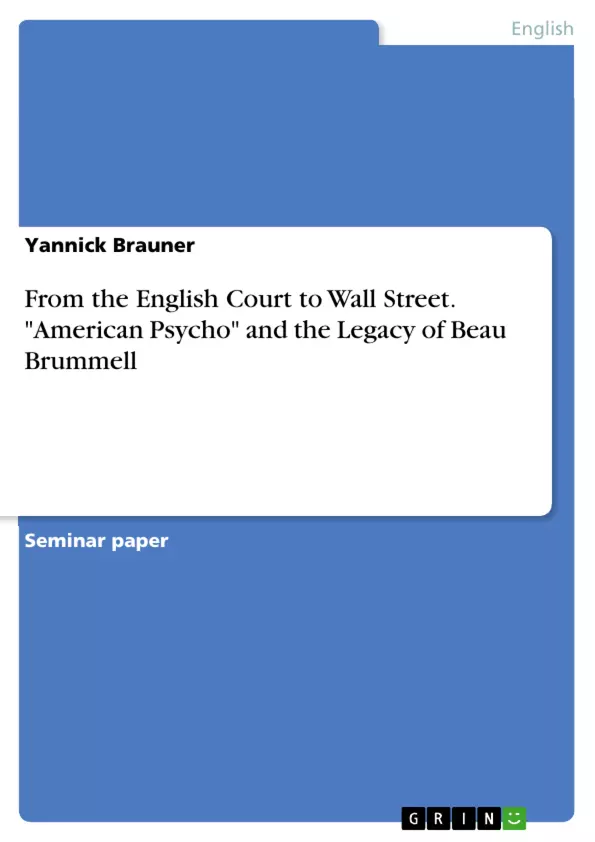The year 1987 – Ronald Reagan is president of the United States, Huey Lewis and Madonna dominate the charts, and the sleeves of salmon pink sport coats need to be rolled-up. The epicenter of fashion, beauty and power is situated in the financial sector, or more precisely, on Wall Street. To survive in this shark tank, you have to be a predator, and if anyone exemplifies this instinct, it is Patrick Bateman from Bret Easton Ellis’ novel American Psycho and Mary Harron’s same-named movie adaptation, which I will mostly refer to. His life revolves around the accumulation of status symbols and the exploitation of other people with the goal of being part of Manhattan’s high society. Interestingly, the characteristics of this fictional character reflect a real-life historical figure, building a bridge between 1980s New York and the English court of the early 1800s. Ultimately, as this paper demonstrates, Patrick Bateman is a stylized version of George “Beau” Brummell, the father of dandyism.
Both the dandy’s “highly stylized, painstakingly constructed self” (Garelick) and his concealed true self have much in common with the psychological profile of a modern psychopath. As such, Brummell provides the perfect model for the protagonist of American Psycho, who early in the film states, “[t]here is an idea of a Patrick Bateman, some kind of abstraction. But there is no real me. Only an entity, something illusory” (Harron). The more disturbing one’s dark inner personality, the more impenetrable the public image. Bateman is a master of sustaining such a façade, and so was Brummell.
Inhaltsverzeichnis (Table of Contents)
- A Bridge Between New York and London
- Time and Space
- Fashion, Routines and Art
- The Words of a Psychopath
- Women, Sexuality and Narcissism
- The Satisfaction of Psychological Needs
- The Logical Successor
Zielsetzung und Themenschwerpunkte (Objectives and Key Themes)
This paper explores the connection between Patrick Bateman, the protagonist of Bret Easton Ellis' novel American Psycho, and the historical figure of Beau Brummell, the father of dandyism. It aims to demonstrate that Bateman's character is a stylized version of Brummell, highlighting the similarities in their personalities and lifestyles.
- The relationship between dandyism and psychopathy
- The construction of identity through fashion and social performance
- The importance of social status and exclusivity in both historical and contemporary contexts
- The parallels between 19th-century London and 1980s New York
- The role of power and wealth in shaping individual behavior and identity
Zusammenfassung der Kapitel (Chapter Summaries)
- A Bridge Between New York and London: This chapter establishes the connection between Patrick Bateman and Beau Brummell, highlighting the similarities in their pursuit of status, their carefully constructed public personas, and the underlying dark nature of their personalities.
- Time and Space: This chapter explores the social and historical contexts of both Brummell and Bateman, focusing on their shared environment of exclusivity and the desire to escape the unpleasant realities of their respective times.
- Fashion, Routines and Art: This chapter delves into the core of dandyism, emphasizing the importance of fashion and the meticulous construction of a refined appearance as a means of achieving social dominance and self-expression. It examines the role of routine and status symbols in the lives of both Brummell and Bateman.
Schlüsselwörter (Keywords)
The main keywords and focus topics of this paper include: dandyism, psychopathy, social status, fashion, identity, exclusivity, power, wealth, American Psycho, Beau Brummell, 19th-century London, 1980s New York.
- Quote paper
- Yannick Brauner (Author), 2017, From the English Court to Wall Street. "American Psycho" and the Legacy of Beau Brummell, Munich, GRIN Verlag, https://www.grin.com/document/375791



